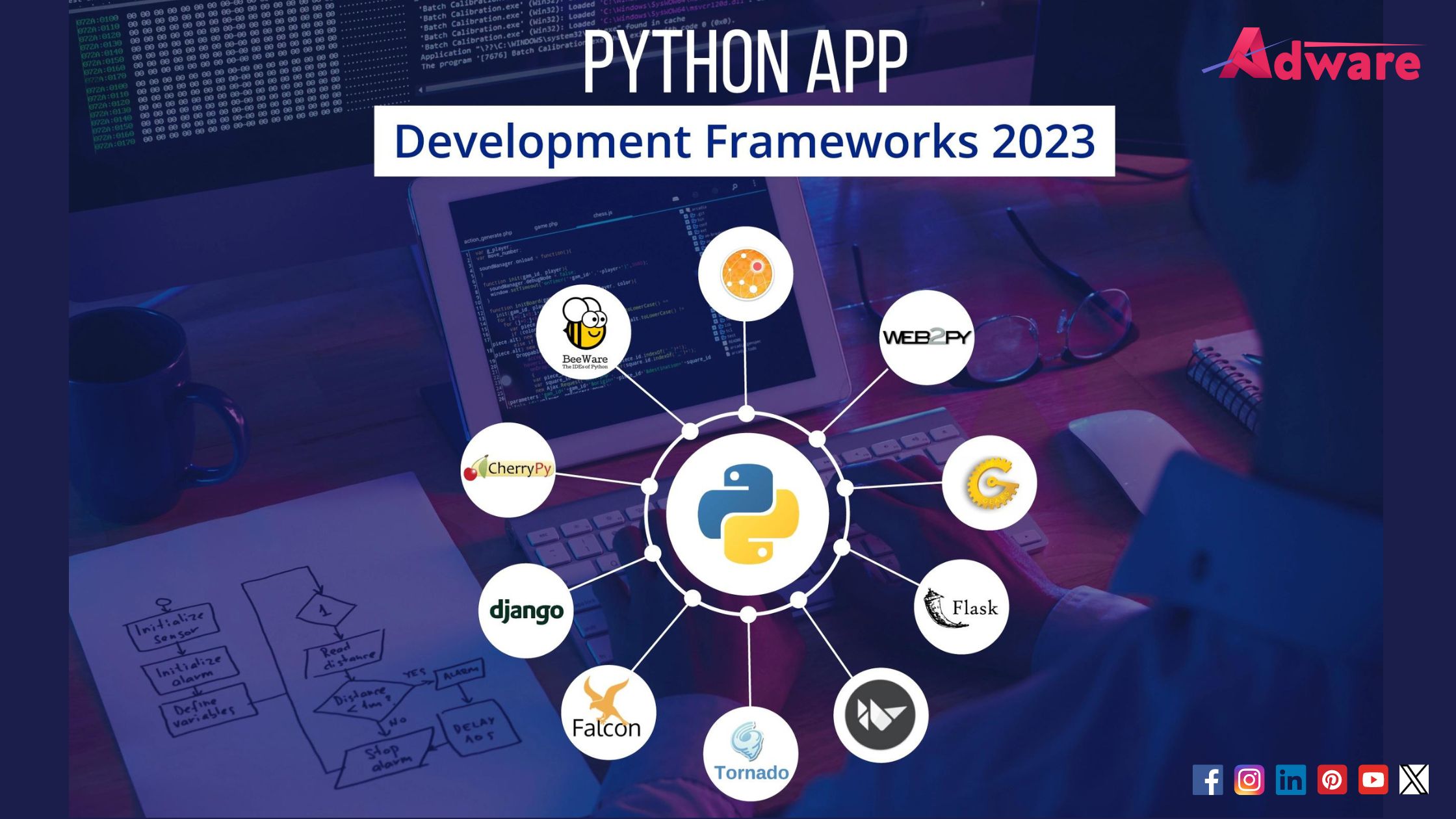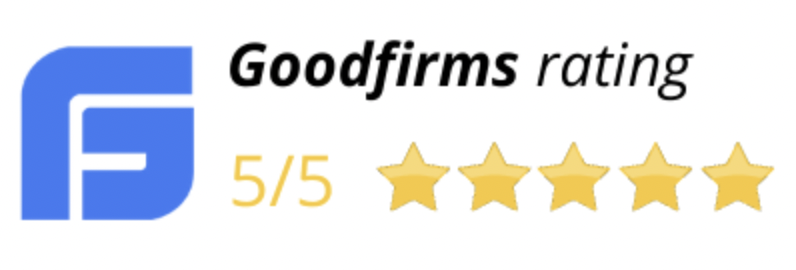More than 48% of engineers use Python for software development, according to the most recent Statista data. Major companies like IBM, NASA, Spotify, and Instagram use Python, making it one of the most well-liked programming languages.
Python's wide variety of libraries, packages, and frameworks contribute to its popularity. A set of modules and packages known as a Python application framework enables programmers to create apps by using a pre-built implementation of duplicated functions. They liberate programmers from trivial problems like protocol, socket, and thread management.
There are several Python frameworks for mobile app development and web app development that enable seamless, efficient, and swift application development. In this article, we've identified the top frameworks.
Why Should I Go for Python App Development?
Python works best for developing dynamic apps integrated with CRUD processes and avoiding repeated coding for things like sessions and authentication. Additionally, it offers an execution system when you're developing a separate user interface with related logic.
Python is also the most excellent choice if you are working under tight deadlines, resources, and time constraints. Python offers many development possibilities, from full-stack and DevOps to AI/ML, data engineering, and data science.
What are the Types of Python Frameworks For App Development?
There are three types of Python application frameworks: Microframework, Full-stack, and Asynchronous Framework.
A). Micro Framework:
Certainly, a "micro-framework" is a term often used in the context of web development and software frameworks. In the context of web development, a micro framework is a lightweight web framework that provides the essential components for building web applications but keeps the core features minimal. Micro frameworks are designed to be simple, flexible, and easy to use, often with fewer built-in features compared to full-fledged web frameworks.
Here are some key characteristics of micro frameworks:
-
Minimalism: Micro frameworks prioritize simplicity and minimalism. They typically provide only the essential components required for web development, such as routing, request handling, and basic templating. This minimalist approach allows developers to have more control over the components they use.
-
Flexibility: Micro frameworks are designed to be flexible, allowing developers to choose and integrate additional libraries or components as needed. This flexibility enables developers to tailor the framework to their specific project requirements.
-
Small Footprint: Micro frameworks usually have a small codebase and a small footprint in terms of file size and memory usage. This makes them suitable for building lightweight web applications, APIs, or prototypes.
-
Rapid Development: Micro frameworks are often favored for rapid development, as they reduce the overhead associated with more extensive frameworks. Developers can quickly get started and build applications without being encumbered by unnecessary features.
-
Customization: Developers using micro frameworks have the freedom to customize their applications to a high degree. They can select the components, libraries, and tools that best fit their project's needs.
-
Learning Curve: Micro frameworks are typically easier to learn and grasp for developers who are new to web development or those who prefer a simpler approach.
B). Full-Stack Framework:
A "full-stack framework" is a comprehensive software framework that provides a set of tools, libraries, and features for building all aspects of a web application, including both the frontend (client-side) and backend (server-side) components. Full-stack frameworks are designed to streamline the entire development process by offering pre-built solutions for various tasks, such as handling HTTP requests, managing databases, rendering web pages, and managing user interfaces. They aim to provide an integrated and cohesive development environment for building web applications.
Here are some key characteristics and components typically associated with full-stack frameworks:
-
Frontend Components: Full-stack frameworks often include frontend components or libraries for building the user interface of a web application. This may include templating engines, client-side routing, and tools for managing user interfaces.
-
Backend Components: These frameworks also provide backend components for handling server-side logic, managing databases, and handling HTTP requests and responses. This often involves features like routing, middleware support, and database ORM (Object-Relational Mapping) capabilities.
-
ORM (Object-Relational Mapping): Full-stack frameworks typically include an ORM or database integration layer, making it easier to interact with databases. This allows developers to work with databases using object-oriented programming principles rather than writing raw SQL queries.
-
Authentication and Authorization: Many full-stack frameworks offer built-in authentication and authorization mechanisms, simplifying the process of securing web applications and managing user access.
-
Routing: Full-stack frameworks often include a routing system that maps URLs to specific code handlers or controllers. This makes it easy to define the structure and behavior of different parts of the application.
-
Middleware: Middleware components in these frameworks allow developers to insert custom logic or processing steps into the request/response cycle. This can be useful for tasks like request validation, logging, or authentication checks.
-
Template Engines: Full-stack frameworks commonly include template engines or tools for generating dynamic HTML or other content that is sent to the client's web browser.
-
Built-in Server: Some full-stack frameworks come with a built-in web server, which can simplify the development and testing process.
C). Asynchronous Framework:
An "asynchronous framework" is a software framework that enables developers to build applications that can perform tasks concurrently and efficiently handle asynchronous operations. Asynchronous programming allows tasks to be executed independently, without blocking the execution of other tasks, resulting in improved performance and responsiveness in applications that perform I/O-bound or CPU-bound operations.
Key characteristics and components of asynchronous frameworks include:
-
Concurrency: Asynchronous frameworks facilitate the execution of multiple tasks concurrently, allowing applications to perform efficiently even when dealing with tasks that may take varying amounts of time to complete.
-
Non-Blocking Operations: In asynchronous programming, tasks can initiate I/O operations (such as reading from a file or making network requests) and continue executing other tasks while waiting for the I/O operations to complete. This avoids blocking the entire program and maximizes resource utilization.
-
Event Loop: Many asynchronous frameworks are built around an event loop, which is a central component responsible for managing and dispatching asynchronous events, such as I/O events or timers. Event loops ensure that tasks are executed in the most efficient way possible.
-
Callback Mechanism: Asynchronous frameworks often use callback functions to handle the results of asynchronous operations. Callbacks are executed when an operation completes, allowing developers to define how the program should respond.
-
Promises and Futures: Some asynchronous frameworks provide abstractions like promises (in JavaScript) or futures (in other languages) to simplify working with asynchronous code. These abstractions make it easier to handle asynchronous operations in a more structured and readable manner.
-
Coroutine Support: Some programming languages and frameworks offer coroutine support, which allows developers to write asynchronous code in a more sequential and readable style. Coroutine-based asynchronous frameworks can make code easier to understand and maintain.
-
Concurrency Control: Asynchronous frameworks often include mechanisms for controlling concurrency, such as limiting the number of simultaneous asynchronous tasks or managing shared resources safely.
10 Most Popular Python Frameworks For App Development
Here’s a list of the most popular Python app development frameworks:
a) Django:
Django is a high-level, open-source Python web framework designed to simplify and accelerate the development of web applications. It was originally developed at the Lawrence Journal-World newspaper by Adrian Holovaty and Simon Willison and released as an open-source project in 2005. Since then, it has gained widespread popularity in the web development community for its robustness, flexibility, and adherence to the "batteries-included" philosophy, which means it comes with many built-in features and tools.
b) Flask:
Flask is a lightweight, open-source Python web framework designed for simplicity, flexibility, and ease of use. Created by Armin Ronacher, Flask is known for its minimalist approach to web development, allowing developers to have greater control and choose the components they need to build web applications. It is often described as a "micro" framework because it provides the essential tools for building web applications without imposing a strict structure or including many built-in features.
c) Web2Py:
Web2py is an open-source, full-stack web application framework written in Python. It is designed to simplify web application development by providing an integrated development environment (IDE) and a set of tools that cover all aspects of web development, including the backend, frontend, and database management. Web2py emphasizes ease of use, security, and rapid development.
d) TurboGears:
TurboGears is an open-source, full-stack web application framework for Python that is designed to simplify the development of web applications by providing a set of integrated tools and components. It follows the Model-View-Controller (MVC) architectural pattern and is known for its flexibility, scalability, and ease of use.
e) Falcon:
Falcon is an open-source, minimalist web framework for building high-performance web APIs in Python. It is designed for developers who require speed, simplicity, and efficiency when creating RESTful web services and APIs. Falcon focuses on being lightweight, resource-efficient, and optimized for handling HTTP requests and responses with low overhead, making it an excellent choice for applications where performance is critical.
f) CherryPy:
CherryPy is an open-source Python web framework that allows developers to build web applications in a straightforward and minimalist manner. It is designed with simplicity, flexibility, and extensibility in mind, making it an excellent choice for developers who prefer lightweight frameworks and want to have more control over the components used in their web applications.
g) Tornado:
Tornado is an open-source, asynchronous networking framework and web server written in Python. Unlike traditional synchronous web frameworks, Tornado is specifically designed for building high-performance, non-blocking web applications and real-time web services. It excels in scenarios that require handling a large number of concurrent connections, such as chat applications, online gaming, and streaming services.
h) AIOHTTP:
AIOHTTP is an open-source asynchronous web framework for building web applications and web APIs in Python. It is designed for high concurrency and performance, making it well-suited for handling a large number of simultaneous connections and asynchronous I/O operations. AIOHTTP leverages Python's asyncio library to enable asynchronous request handling, making it suitable for applications that require non-blocking operations and real-time capabilities.
i) Kivy:
Kivy is an open-source Python framework for developing cross-platform, multitouch applications. It is primarily used for creating graphical user interfaces (GUIs) for various platforms, including desktop computers (Windows, macOS, Linux), mobile devices (Android, iOS), and even Raspberry Pi. Kivy is known for its flexibility, ease of use, and ability to create interactive, touch-friendly applications.
j) BeeWare:
BeeWare is an open-source collection of tools and libraries designed to simplify the development of native user interfaces and applications using Python. It enables developers to build cross-platform applications that run natively on various operating systems, including Windows, macOS, Linux, iOS, Android, and more. BeeWare's mission is to make Python a first-class language for developing graphical applications.
Python offers a number of frameworks for developing apps, and choosing the best one can be challenging given the many considerations to take into account, such as cost and complexity as well as scalability, additional features, learning curve, and so on.
Fortunately, Adware Technologies, a top Python development company, can help you make the best decision for your project. We provide custom Python programming solutions and have demonstrated competence in a number of Python application frameworks, including Django, Flask, TurboGears, Kivy, and Tornado.




Comments (0)